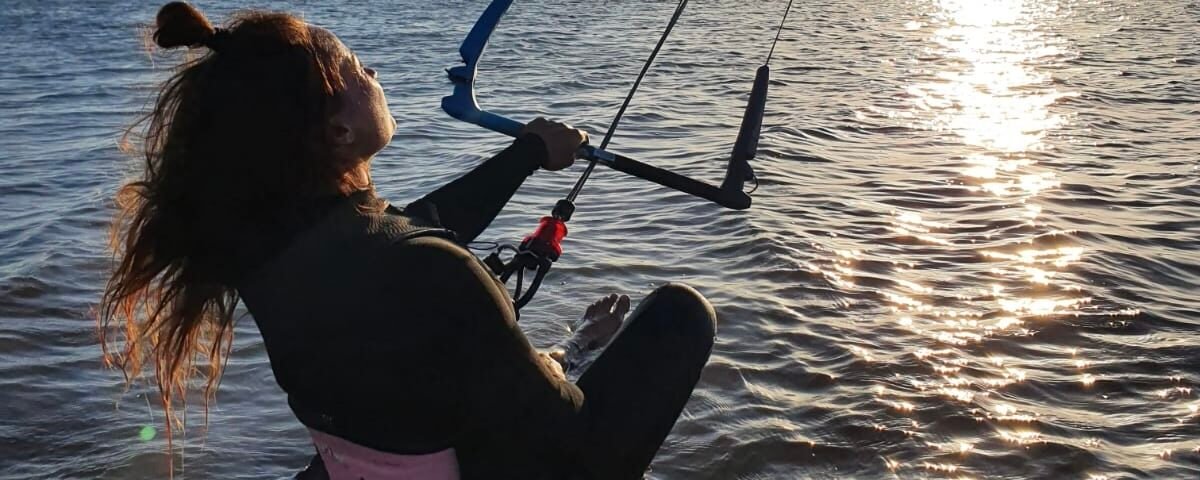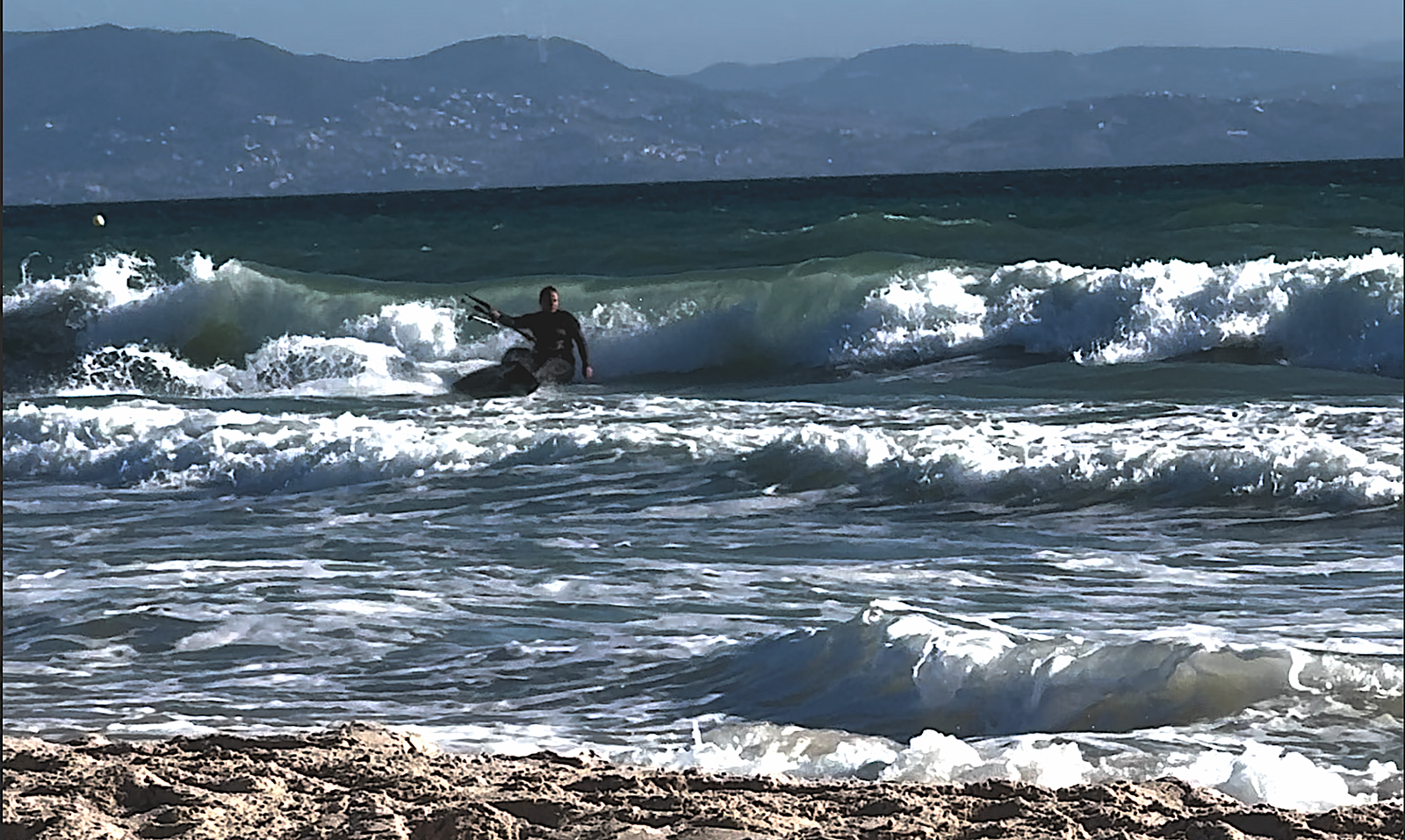The Journey Is the Goal – Understanding Progress

I often hear the question: “How many hours of lessons do I need to learn this kite?”
It’s a deeper topic than it might seem. The pace of progress and how effective your learning is depends on many factors and variables. In this article, I want to give you a sense of what learning kitesurfing really looks like and why the journey is just as important as the destination.
What does it mean to “learn to ride a kite”?
Let’s say that at the beginner stage, your goal is to be able to independently prepare your gear, launch the kite, ride, not drift away, and finish the session safely.
Imagine the wind is perfectly steady, the water is flat, you feel great physically and mentally every day, and you have one-on-one lessons with an instructor with whom you have amazing flow.
In those conditions, you could become independent in about 8 hours (2h intro & kite control + 1h body dragging + 2h steady pull & water start + 2h upwind position & simple turns + 1h kite launching & landing).
I know a student who mastered it in 4 hours. But I also know people who spent dozens of hours on the water and still weren’t independent. Why? Because if any of the factors mentioned above are off, that time will stretch.
What affects the pace of progress?
Changing wind conditions. You ride different kites, each behaving differently depending on size and type. You think you’ve got the hang of a 12m kite, then get a 6m and it tosses you left and right. It takes time to feel these differences and adjust your body movements to the kite. Kind of like switching from a car without power steering to one with it 😉
Choppy water. Another variable your body needs time to get used to. Strong chop requires learning to ride out past the breaking waves near the shore. Launching the board is less stable, and riding takes more work from your legs and whole body. You also need to sharpen awareness and reaction skills.
Your mindset. Kitesurfing delivers plenty of adrenaline and emotion from day one. Your attitude, expectations, motivation, frustration, stress management, self-awareness – all of it strongly affects your progress. At first, you’re taking in so much new information that you need to process it and put it into action. Combined with the sensations of controlling the kite and your first water exercises, you might feel slightly overwhelmed. That’s why mental breaks during lessons are important.
Physical condition. Kitesurfing doesn’t require elite fitness or strength. It’s for everyone, but body awareness, flexibility, and balance matter. On the water, you’ll discover muscles you didn’t even know you had. Even experienced riders get sore after a session following a long break. After your first two days, your body definitely won’t be 100% efficient.
Lesson format. Kite schools offer different formats: private, semi-private, or group lessons. Each has pros and cons, but in terms of learning speed, private lessons win every time. Your instructor can focus 100% on you, notice every detail to correct, and celebrate every small success. Of course, instructor skill matters too, so always choose schools with experienced, certified instructors.
Progress is a journey
The truth is, learning never really ends. Saying you’ve learned to ride a kite is like saying you’ve learned life. You might think you’ve got it, then go to a spot with more variables, find yourself in a new situation, and realize you still have more to learn to feel safe and independent.
The key is to enjoy the journey itself, not just the end goal. Feeling the gear, understanding nature, predicting conditions, overcoming challenges and your own limits – all of it is part of the learning process. Curiosity and the drive to learn new maneuvers, tricks, and ride in different conditions keep it exciting. That’s the beauty of this sport – and of life itself.
Once you get it, your learning never stops. First you master a twin-tip – you start craving hooked tricks. You perform a few of those – unhooking catches your attention. You go to a wave spot – you want to ride a directional. And when that one guy at the spot annoys you, riding at 8 knots while you’re waiting for wind – you’ll feel the urge to learn foiling 😉
Every step is a challenge. But it’s exactly these challenges, learning new things, that bring joy, satisfaction, and a constant appetite for more.
Remember to take a moment to reflect – see where you started, acknowledge how much you’ve learned, and move forward with gratitude.
So don’t ask how many hours it will take. If you really want to do it, it will take a lifetime – and you won’t regret a single minute.
Want to feel that kitesurfing is more than just a sport? Discover how a kite can calm your mind and restore balance in life in Kite’arsis – How Kitesurfing Heals the Soul.



